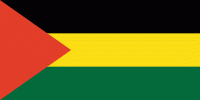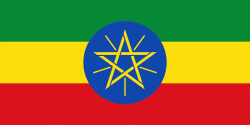Benishangul-Gumuz Region (Benishangul-Gumuz Region)
 |
The region has faced major challenges to economic development, due to lack of transportation and communications infrastructure. The Abay River (Blue Nile) divides Benishangul-Gumuz, and there was no bridge crossing it until 2012. The major road that connects the Metekel Zone and the Assosa Zone was built by the China Construction Company in 2012. The road has a 365-meter bridge that crosses the Abay. Nowadays it is simple to travel between the regional capital of Assosa and Gilgil Beles, the capital of the Metekel Zone. Previously one had to travel through Wollega and Gojjam in the neighboring regions of Oromia and Amhara, a distance of 1,250 kilometers, but it is now around 378 kilometers on the new road and bridge. Conditions for travel within zones varies, but is often poor and subject to disruption by the rainy season. On 28 July 2009, the Regional Rural Roads Authority reported that over the previous year almost 600 of the 800 kilometers of local all-weather roads had been upgraded at a cost of 11.5 million birr, and an additional 447 kilometers of roads constructed.
Based on the 2007 Census conducted by the Central Statistical Agency of Ethiopia (CSA), the Benishangul-Gumuz region has a total population of 784,345, consisting of 398,655 men and 385,690 women; urban inhabitants number 105,926 or 13.51% of the population. With an estimated area of 49,289.46 square kilometers, this region has an estimated density of 15.91 people per square kilometer. For the entire region 174,445 households were counted, which results in an average for the region of 4.5 persons to a household, with urban households having on average 3.6 and rural households 4.7 people. The ethnic groups include the Amhara (25.41%), Berta (21.69%), Gumuz (20.88%), Oromo (13.55%), Shinasha (7.73%) and Agaw-Awi (4.22%). Main languages are the Berta (25.15%), Amharic (22.46%), Gumuz (20.59%), Oromo (17.69%), Shinasha (4.58%) and Awngi (4.01%). Concerning religion, 44.7% were Orthodox Christians, 33.3% Muslim, 13.53% were Protestant, and 7.09% practiced traditional beliefs. It had a projected population of 1,127,001 in 2018.
In the previous census, conducted in 1994, the region's population was reported to be 460,459 of which 233,013 were men and 227,446 were women. Rural population was 424,432, while the urban population was 36,027.
According to the CSA,, 27.23% of the total population had access to safe drinking water, of whom 22.35% were rural inhabitants and 58.53% were urban. Values for other reported common indicators of the standard of living for Benishangul-Gumuz include the following: 19.1% of the inhabitants fall into the lowest wealth quintile; adult literacy for men is 47.4% and for women 23.2%; and the regional infant mortality rate is 84 infant deaths per 1,000 live births, which is greater than the nationwide average of 77; at least half of these deaths occurred in the infants’ first month of life.
There are 2 refugee camps and 1 transit center, housing 36,440 refugees from Sudan and South Sudan, located in Benishangul-Gumuz region.
Map - Benishangul-Gumuz Region (Benishangul-Gumuz Region)
Map
Country - Ethiopia
 |
 |
| Flag of Ethiopia | |
Anatomically modern humans emerged from modern-day Ethiopia and set out to the Near East and elsewhere in the Middle Paleolithic period. Southwestern Ethiopia has been proposed as a possible homeland of the Afroasiatic language family. In 980 BCE, the Kingdom of D'mt extended its realm over Eritrea and the northern region of Ethiopia, while the Kingdom of Aksum maintained a unified civilization in the region for 900 years. Christianity was embraced by the kingdom in 330, and Islam arrived by the first Hijra in 615. After the collapse of Aksum in 960, a variety of kingdoms, largely tribal confederations, existed in the land of Ethiopia. The Zagwe dynasty ruled the north-central parts until being overthrown by Yekuno Amlak in 1270, inaugurating the Ethiopian Empire and the Solomonic dynasty, claimed descent from the biblical Solomon and Queen of Sheba under their son Menelik I. By the 14th century, the empire grew in prestige through territorial expansion and fighting against adjacent territories; most notably, the Ethiopian–Adal War (1529–1543) contributed to fragmentation of the empire, which ultimately fell under a decentralization known as Zemene Mesafint in the mid-18th century. Emperor Tewodros II ended Zemene Mesafint at the beginning of his reign in 1855, marking the reunification and modernization of Ethiopia.
Currency / Language
| ISO | Currency | Symbol | Significant figures |
|---|---|---|---|
| ETB | Ethiopian birr | Br | 2 |
| ISO | Language |
|---|---|
| AM | Amharic language |
| EN | English language |
| OM | Oromo language |
| SO | Somali language |
| TI | Tigrinya language |
















